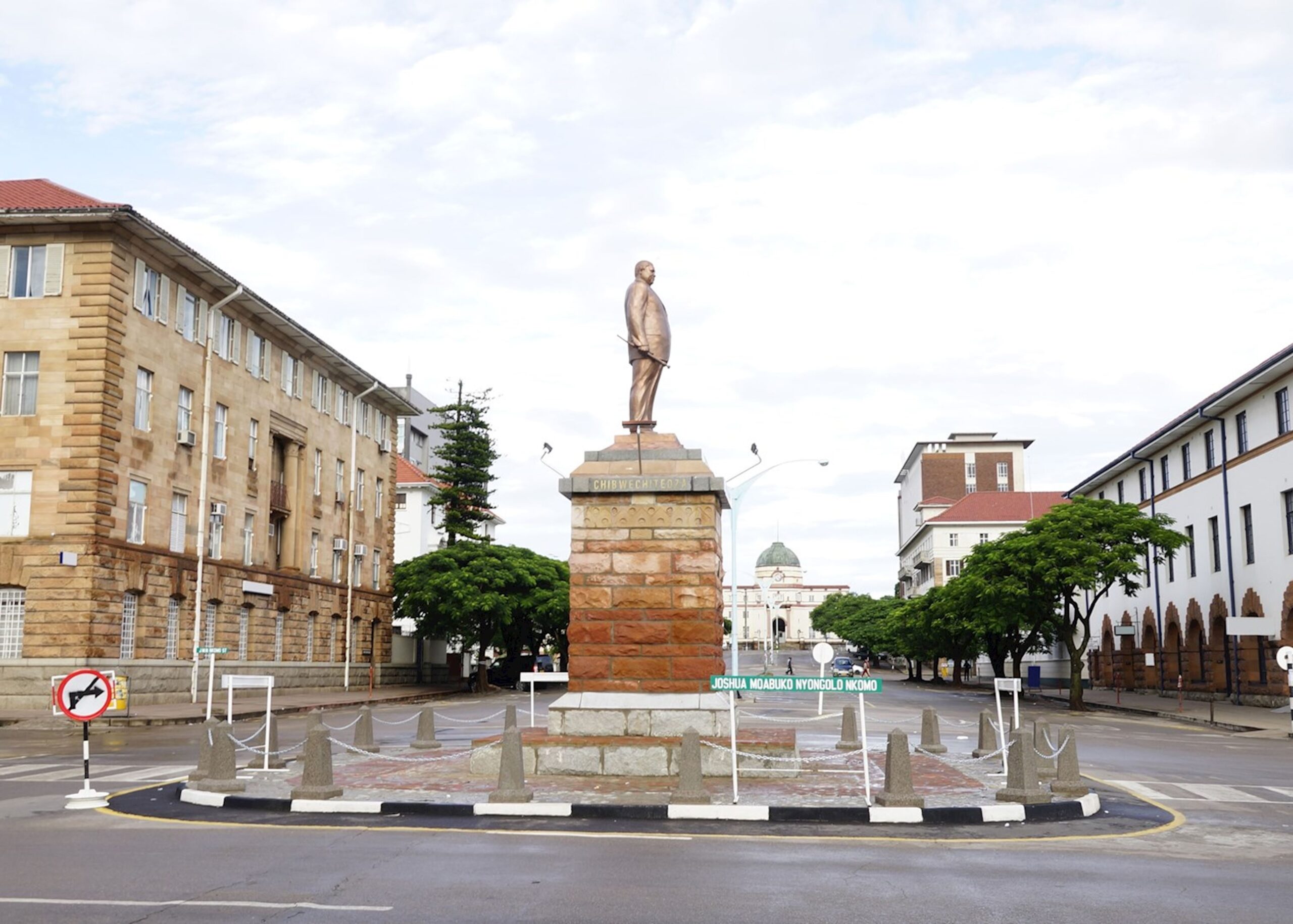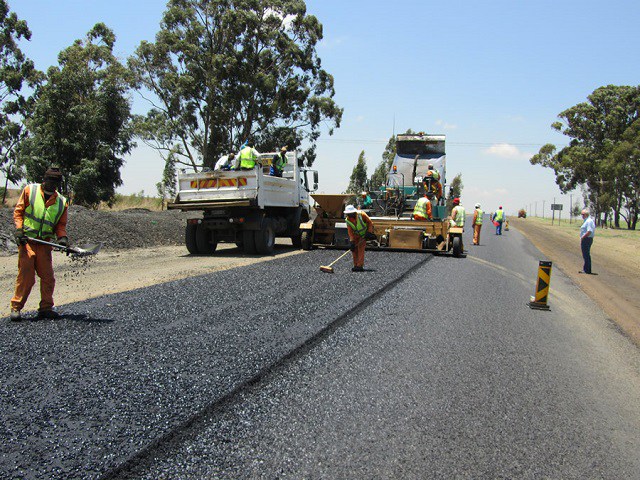Govt infrastructural projects lay solid basis for growth
THE Government’s decision to prioritise investments in key infrastructural projects, since its inception in 2017, will transform the economy and lives of many ordinary citizens, industry experts say.
The Second Republic, led by President Mnangagwa, has invested significantly in infrastructural development as a key enabler to economic transformation, despite limited access to external lines of credit.
Given the importance of infrastructure to a country’s economic development, investments by the Government in the sector have certainly laid a firm foundation for rapid and sustainable economic growth and development.
According to the Brooklyn Institute, important national goals also depend on key infrastructure.
The acclaimed global education institution says the economy needs reliable infrastructure to connect supply chains and efficiently move goods and services across borders. Infrastructure connects households across metropolitan areas to higher-quality opportunities for employment, healthcare and education.
Zimbabwe’s infrastructural development thrust dovetails with the Government’s vision of transforming the country into an upper middle-income economy status by 2030, whose first part is anchored by targets in the National Development Strategy 1 (NDS 1), a five-year economic blueprint launched in 2021.
Using mostly internally mobilised resources, the Second Republic has undertaken rehabilitation of major roads including the Harare-Beitbridge highway and progressed the US$1,5 billion Hwange Thermal Power Expansion project despite Covid-19 limitations while key water bodies such as the Gwayi-Shangani Dam in Matabeleland North Province and Kunzvi Dam in Mashonaland East Province remain largely on course.
The new look Robert Gabriel Mugabe International Airport terminal which underwent a US$153 million facelift is set for official commissioning on July 13, 2023.
The Government is also developing the Mbudzi Interchange in Harare to the tune of US$88 million to improve traffic flow at a critical intersection on the main highway connecting Africa’s north and south trade corridor.
The Mbudzi roundabout had been a major choke-point of Southern Harare before the Government committed resources to turn it into an interchange as the Second Republic forges ahead with upgrading of infrastructure to cope with modern demands and trends.
The project has progressed beyond 37 percent completion while work on the multimillion-dollar expansion and rehabilitation of the Harare-Kanyemba Highway has reached 38 percent completion.
In an interview, the Construction Industry Federation of Zimbabwe (CIFOZ) chief executive officer Mr Martin Chingaira said: “Since the coming in of the Second Republic, infrastructure development has been its priority which at the end of the day we are seeing results.
For example, when coming from Harare to Bulawayo one can choose which road to take between Harare-Chivhu-Gweru and Harare-Gweru highways because both roads are usable.
“Personally, for a very long time, I have not been using the Harare-Chivhu-Gweru road, but now I am able to choose either of the two because they are all usable.
“And the Emergency Road Rehabilitation Project (ERRP) has done very well in terms of making sure that every road within local authorities (rural and urban) its spruced up.”
The Government has also placed emphasis on the completion of the ongoing works on major roads and re-gravelling of feeder roads across the country.
Mr Chingaira said players in the construction industry have also taken heed of the Government’s call on housing delivery where 220 000 housing units are targeted to be built by 2025.
“The Second Republic is targeting 220 000 housing units by 2025 and the Government has announced that 183 000 houses have so far been built.
“Therefore, what this means is we have already surpassed the target of 220 000 houses by 2025 and we are now talking about a million houses by 2025.
“There are certain projects that are being done by contractors in terms of building houses for our citizens and we also have dams to support the expanding population in terms of housing and irrigation.
“We are seeing a lot of dams being constructed and those that had been stopped prior to the coming of the Second Republic have now been completed and thus transforming the lives of citizens for the better,” he said.
The Gwayi-Shangani Dam, which is expected to be completed this year is a massive water body to propel sustainable economic growth and development through fostering projects such as irrigation in the Gwayi area, tourism, and recreational facilities as well as supplying water to Bulawayo, Zimbabwe’s second-largest city that experiences perennial water challenges.
In October last year, Bulawayo City Council (BCC) began the process to expand critical water treatment and conveyance infrastructure in readiness to receive increased water supplies from Gwayi-Shangani Dam which is touted as the lasting solution to the city’s water woes.
The massive water project is expected to ignite rural industrialisation across the Matabeleland region where communities will have access to clean water and electricity to power local institutions.
The US$1,5 billion Hwange Thermal Power Station Unit 7 and 8 expansion project will improve the security of energy supply in the country while thus far it has generated significant economic and social spin-offs with 50 000 people and international businesses having already directly benefited from the capacity extension of the power plant.
Mr Chingaira said due to significant infrastructural development projects, employment figures in the construction sector had in the past five years improved to 17 000 from 10 000.
“In the past, we used to have an average of 10 000 workers in the construction industry, but now we are talking of an average of about 17 000 and once employment is increased the whole economy will start to transform for the better.
“By virtue of people being employed everyone will start to look for commodities for them to improve their lives and along the lines, it means all manufacturers must also upgrade themselves to meet demand and the economy automatically will be growing,” he said.
In a separate interview, Professor Gift Mugano said: “The development of infrastructure was massive in the last five years and we have never seen this kind of infrastructural development before. It was massive because we have seen road rehabilitation through the use of local contractors.
“Prior to the Second Republic, we were supposed to have this Beitbridge-Chirundu road rehabilitation project but that project could not take off because the investor was ‘a fake investor’ but the Government took it upon itself to develop infrastructure using domestically mobilised resources.
“We have seen a lot of development around dams which is also very good because we need to harvest water for agriculture.”
He said the Government now needed to change the funding model for infrastructure development programmes to address the challenges associated with the cash-based model.
“These infrastructure development projects have come at a cost, which now calls us to change the model from cash to long-term finance, and a model which has worked globally is the diaspora bonds.
“We have seen Ethiopia using diaspora bonds and the diaspora bond by Ethiopia was heavily subscribed by the locals even if it was called diaspora bond because it was very attractive in terms of interest rates,” said Prof Mugano.
“For example, it’s as good as you want to build houses for the diaspora even locals can come and buy because they are equally in Zimbabwe and the point is even those in the local informal sector will come and buy because this will be legit and credible means of getting accommodation.
“I can bet on you that if the Government comes with a bond for housing the biggest subscribers will be locals because they have got money.”
Economic commentator Ms Wendy Mpofu said while some of the infrastructure projects that the Government has embarked does not have immediate and direct benefits, it was pleasing that authorities have prioritised their development which is key to facilitating trade and investment in the country.
“Prioritisation of key infrastructure such as the road network by the Government is quite commendable. Though some people might not derive direct benefits from the Harare-Kanyemba road rehabilitation project, it is pleasing to note that the Government is promoting development across all corners of the country including deeply rooted remote areas,” she said.-herald









